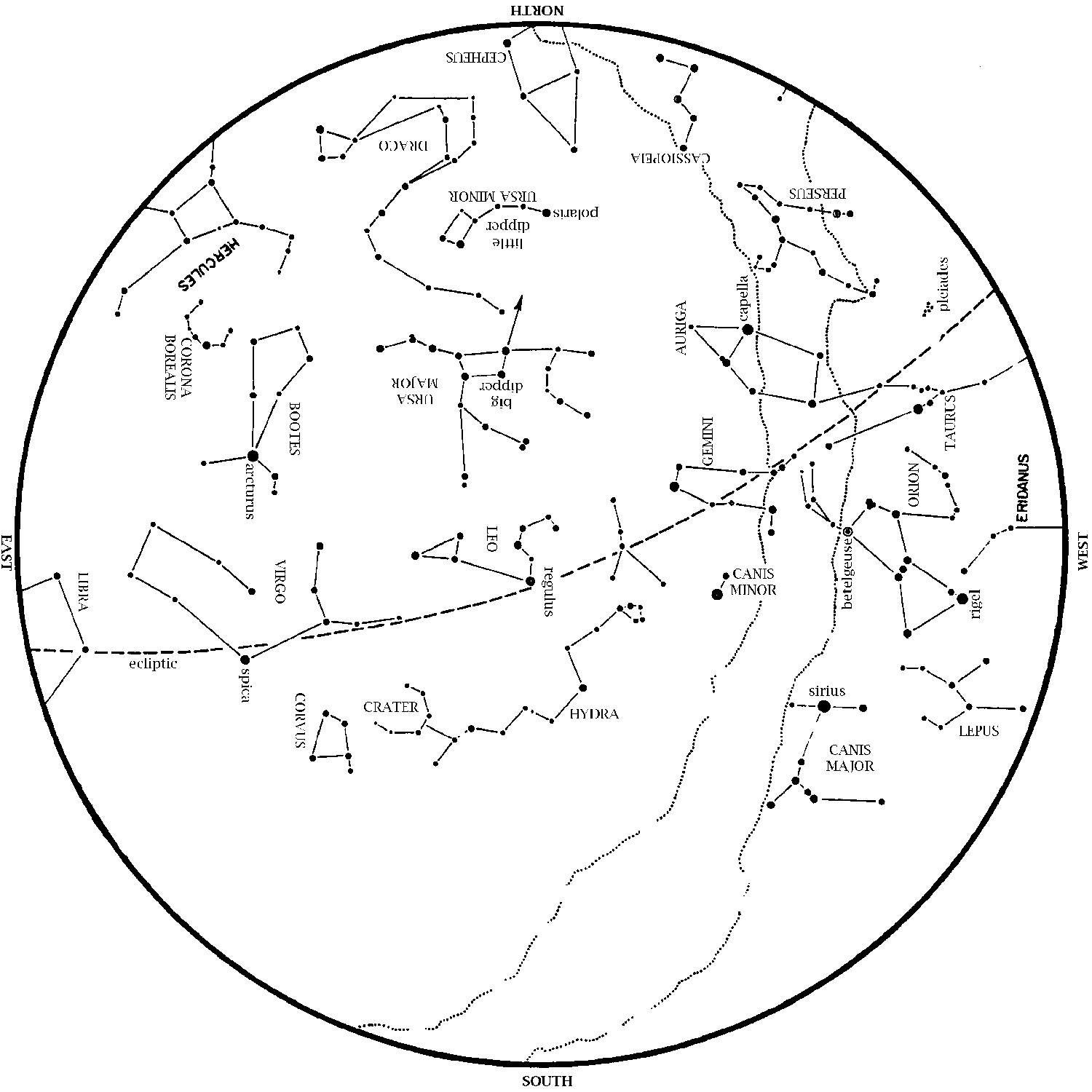Mars remains in the west at dusk this month as it moves through Aries. Mars continues to fade a little each night as Earth continues to leave it farther behind. Later on this month, Mars begins to be lost in the glare of the Sun.
Mercury enters the evening sky as Mars leaves it. By April 30, Mars will be gone but Mercury will be low in the west northwest, near the Pleiades star cluster.
Venus is in the west at dusk. Look over the point of sunset for the brightest thing there.
Jupiter is now high in the sky, almost overhead, as soon as night falls. Jupiter outshines all stars we ever see at night, so it will be obvious when you look up at dusk.
Saturn is in the southwest at dawn.
Brilliant winter stars shift towards the west during April. Dazzling Orion is high in the southwest at dusk. His three-starred belt is halfway between reddish Betelgeuse and bluish Rigel. Orion’s belt points right to Aldebaran in Taurus the Bull. Above Orion are the twin stars Castor and Pollux, marking the heads of Gemini, the Twins. Jupiter is among the Twins this month. You can find Sirius, the brightest star we ever see at night, by drawing a line from Orion’s belt towards south (left as you face west). Forming a triangle with Betelgeuse and Sirius is Procyon, the Little Dog Star.
Joining the winter stars are stars of spring in the south and east. Look for Leo, the Lion almost overhead at dusk. In the east, extend the Big Dipper’s handle to ‘Arc to Arcturus’ and then ‘speed on to Spica’.
Moon Phases in April 2015:
Full April 5, 7:05 am
Last Quarter April 11, 10:44 pm
New April 18, 1:56 pm
1st Quarter April 25, 5:55 pm
The Full Moon of April 4 passes through the Earth’s shadow, causing a total lunar eclipse. Unfortunately, the Moon clips the edge of the Earth’s shadow, allowing for only 5 minutes of totality. What’s more, for us the eclipse occurs near moonset and sunrise (which are almost simultaneous when there is a lunar eclipse). That puts the Moon low to the horizon during the eclipse; only those with clear views all the way to the western horizon can get a good look. It also means that totality falls during morning twilight.
Eclipse times:
Partial eclipse begins: 5:15 am
Totality 6:57-7:02 am
Moonset (still partially eclipsed) 7:13 am
On most clear Saturday nights at the George Observatory, you can hear me do live star tours on the observation deck with a green laser pointer. If you’re there, listen for my announcement.








